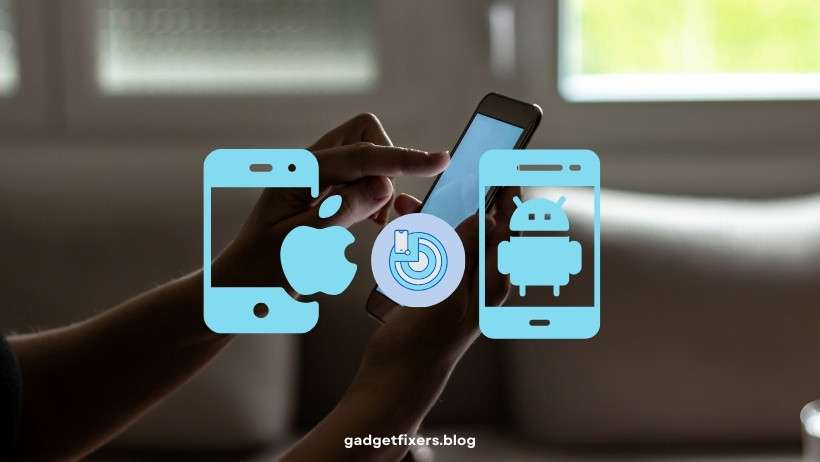Find My iPhone with Android Device Manager
Introduction
When it comes to tracking lost or stolen devices, Apple’s Find My iPhone and Google’s Android Device Manager (also known as Find My Device) are two popular solutions. Each tool offers distinct features and capabilities tailored to their respective ecosystems. In this guide, we’ll compare these two services, Find My iPhone vs Android Device Manager, examine their strengths and weaknesses, and help you determine which one suits your needs best.
1. Overview of Find My iPhone
Find My iPhone is Apple’s built-in device tracking solution integrated into iOS devices. It offers seamless functionality for locating, locking, or erasing lost Apple devices remotely.
Key Features:
- Real-Time Location Tracking: Locate your device on a map through the Find My app or iCloud.com.
- Activation Lock: Prevents unauthorized use or reactivation without the Apple ID credentials.
- Lost Mode: Locks the device and displays a custom message with contact information.
- Find My Network: Locates offline devices by leveraging nearby Apple devices.
Pros:
- Seamless integration with Apple’s ecosystem.
- Strong security features, including end-to-end encryption.
- Offline tracking capabilities through the Find My Network.
Cons:
- Exclusive to Apple devices (iPhone, iPad, Mac, etc.).
- Requires an Apple ID for full functionality.
2. Overview of Android Device Manager (Find My Device)
Android Device Manager (now called Find My Device) is Google’s equivalent for tracking and managing Android devices. It offers similar functionality tailored to Android smartphones and tablets.
Key Features:
- Real-Time Location Tracking: Find your device’s location on a map through the Find My Device app or Google’s web portal.
- Remote Lock and Erase: Lock the device and erase data remotely.
- Play Sound: Make your device emit a loud sound to help locate it.
- Compatible Across Manufacturers: Works on Android devices regardless of the manufacturer.
Pros:
- Easy to set up and use on any Android device.
- Offers essential remote lock and erase capabilities.
- Accessible through any web browser.
Cons:
- Limited offline tracking capabilities.
- Features can vary depending on the device manufacturer.
3. Find My iPhone vs Android Device Manager Comparison Table
| Feature/Aspect | Find My iPhone | Android Device Manager |
|---|---|---|
| Compatibility | Apple devices only | Android devices only |
| Offline Tracking | Yes (via Find My Network) | Limited |
| Security Features | Activation Lock, Lost Mode, Encryption | Remote lock and erase |
| Customizability | Limited | Limited |
| User Interface | Integrated with Apple ecosystem | Integrated with Google services |
| Cost | Free | Free |
| Integration | Deep integration with Apple ecosystem | Works across different Android brands |
4. Security Features: Find My iPhone vs Android Device Manager
1. Activation Lock (Find My iPhone)
Activation Lock prevents unauthorized access to your device by requiring your Apple ID credentials to disable Find My, erase data, or reactivate the device.
2. Remote Lock and Erase (Android Device Manager)
While Android Device Manager lacks an equivalent to Activation Lock, it allows users to remotely lock and erase their devices. However, this does not prevent reactivation.
3. Lost Mode vs. Remote Lock
- Find My iPhone’s Lost Mode displays a custom message on the lock screen, making it easier for someone to return the device.
- Android Device Manager’s Remote Lock does not have a customizable message feature.
5. Choosing the Right Solution for Your Needs
Find My iPhone vs Android Device Manager
When deciding between Find My iPhone and Android Device Manager, consider your specific needs and device ecosystem:
Apple Users (Find My iPhone)
- Best for those who exclusively use Apple devices.
- Offers strong integration, security, and offline tracking capabilities.
Android Users (Find My Device)
- Ideal for Android users with devices from various manufacturers.
- Provides core tracking and remote management capabilities.
Cross-Platform Users
- For families with both iOS and Android devices, consider third-party apps like Prey or Cerberus that work across both platforms.
6. Limitations and Areas for Improvement
Find My iPhone Limitations:
- Exclusively works with Apple devices.
- Requires an active Apple ID for all features.
Android Device Manager Limitations:
- Limited offline tracking capabilities.
- Security features depend on manufacturer implementation.
7. Tips for Maximizing Your Device Tracking Solution
- Regular Updates: Keep your device’s operating system updated for the latest security and tracking features.
- Use Strong Passwords: Protect your Apple ID or Google account with strong passwords.
- Enable All Tracking Features: Turn on features like Lost Mode (Apple) and Remote Lock (Android).
- Consider Third-Party Solutions: For cross-platform needs, third-party apps may offer more flexibility.
8. Frequently Asked Questions (FAQs)
Q: Can I use Find My iPhone to track an Android device?
A: No, Find My iPhone is exclusive to Apple devices. Use a cross-platform app for mixed-device tracking.
Q: Does Android Device Manager offer offline tracking?
A: Not to the same extent as Apple’s Find My Network.
Q: Which solution is better for security?
A: Find My iPhone offers stronger security features like Activation Lock, but Android Device Manager provides basic remote management.
Conclusion
Choosing between Find My iPhone and Android Device Manager depends on your device ecosystem and security needs. Apple’s Find My iPhone offers robust security features and seamless integration, while Google’s Android Device Manager provides essential tracking capabilities for Android users. For more guidance on maximizing device security, explore our related articles.



